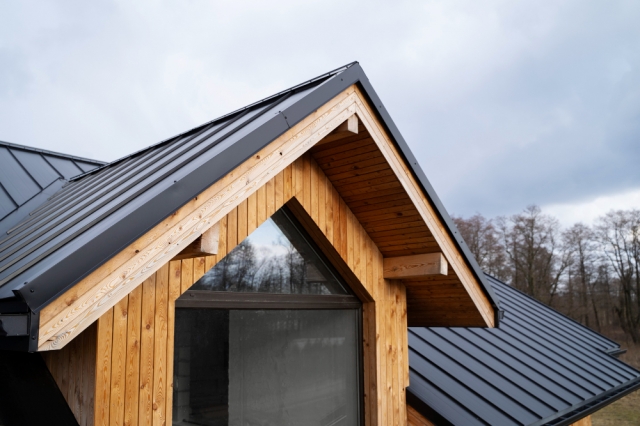Your roof is one of those parts of your home that you probably don't think about every day, yet it's vitally important in protecting everything underneath. With just a little care and some smart choices, your roof can last decades without causing major headaches—or the expense—of frequent repairs or replacements. Want to know how to protect your roof and extend its life? Let's look into some simple yet effective steps you can start right away.
1. Start with Quality Materials
The type of material you use for your roofing can make all the difference in its lifespan. For example, metal roofs are considered the most durable and long-lasting. Would you consider something as tough as metal? This may also be the right time to bring in a well-established metal roofing company, such as K. Graber Construction. A good company would ensure that the installation is top-notch, limiting future problems significantly so that your roof will last longer. Indeed, quality installation makes a big difference.
2. Make It a Point to Schedule Regular Inspections
When was the last time you had your roof inspected? If you can't remember, it's probably been too long. Getting regular inspections at least once a year is an excellent way to catch small problems before they become big (and expensive) ones. An inspection can identify loose shingles, damaged flashing, or other issues that might lead to leaks or water damage if left unchecked. Think of it as a quick “health check” for your roof.
3. Address Issues Immediately
Ever seen a cracked shingle or a small leak in your ceiling? It's easy to ignore what may seem like minor issues, but these can quickly snowball into huge ones. Take the example of a minor leak—it may not sound like a big deal until it starts causing major damage to the insulation, walls, and even the foundation. By the time you realize it, you'll have a full-scale disaster on your hands. Address repairs the moment you notice them. Quick fixes now can prevent significant expense and frustration later.
4. Keep Your Gutters Clear
Did you know that clogged gutters can actually damage your roof? When gutters are full of leaves, twigs, and other debris, they can't drain water properly. Instead, water can back up and pool around the edges of your roof until it seeps into places it shouldn't. Cleaning your gutters a couple of times a year—especially after the fall—can make a big difference in keeping your roof dry and intact.
5. Don't Forget About Ventilation and Insulation
Most people don't realize it, but what's happening in your attic affects your roof more than you might think. Without proper ventilation and insulation, heat and moisture can build up, causing materials to deteriorate faster. Good ventilation lets hot air escape, keeping the attic—and the roof—cool. Proper insulation, on the other hand, helps prevent moisture buildup, which can lead to rot and other problems. Think of it this way: the better an attic ventilates, the longer that roof will last.
6. Trim Those Overhanging Branches
Trees are nice, but when branches overhang your roof, they can cause real trouble. Branches can scratch and wear down shingles, especially when the wind picks up. And when they break off, they can land on your roof, causing damage that needs immediate repair. Plus, leaves and debris from those overhanging branches tend to collect on your roof, creating a cozy home for moss and algae. Keeping trees trimmed back not only protects your roof but also keeps it looking cleaner.
7. Keep Moss and Algae at Bay
Ever notice a roof covered in dark streaks or greenish patches? That's moss or algae, and while it might look harmless, it can actually eat away at roofing materials. Moss, in particular, holds moisture against your roof—a definite no-no that can lead to rot. If you live in a humid or shaded area, it may be beneficial to clean your roof regularly or treat it with a moss-resistant solution. Be careful when doing this, though—use gentle cleaning methods that won't damage your shingles.
8. Apply a Protective Coating
Some roofs benefit from an additional layer of protection—a coating. Think of it as added armor for your roof. Coatings can shield your roof from UV rays, moisture, and even reflect some heat, keeping your home cooler in the summer. If you have a flat roof or a metal one, a protective coating might be worth considering. It's an added expense, yes, but it can pay for itself by extending the life of your roof.
9. Be Ready for Inclement Weather
Storms, snow, and heavy winds are tough on roofs. While you can't stop bad weather, you can prepare your roof to withstand it. Reinforce vulnerable areas, make sure your flashing is secure, and consider storm anchors if you live in an area with strong winds or hurricanes. Don't forget to inspect your roof after major weather events to spot any early signs of damage.
10. Plan for Regular Maintenance
Lastly, a maintenance plan is essential. A roof is not a “set it and forget it” part of your home. Make it a habit to check your roof, clean your gutters, and look for any signs of wear and tear each season. Even a quick look after a storm can reveal issues you might have missed. Staying proactive with maintenance is one of the easiest ways to keep your roof going strong year after year.
Wrapping Up
Your roof is a major investment, and maintaining it doesn't have to be complicated. From selecting the right materials to keeping an eye out for small problems, there are many ways to give it a longer life and keep your home safe. Ready to show your roof some love? Start with these easy steps, and you'll be well on your way to a long-lasting, reliable roof.






